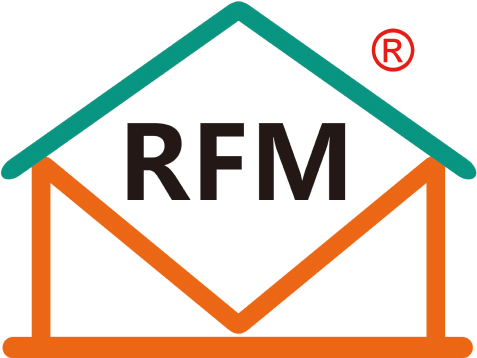Introduction
In today’s metal processing world, being precise and quick is super important. Coil slitting is a key job that turns big metal coils into thinner strips without hurting the material. This process matters a lot for industries like automotive and construction. A steel coil slitting machine is the main tool for this job. It cuts fast and accurately to meet industry needs. The slitting line production line, also called the slitting machine, slitting unit, or strip cutting machine, is special equipment used widely in metal processing.
What is Coil Slitting and Why is it Important?
Coil slitting is a careful metal cutting process. It splits wide master coils into narrower strips with exact sizes and little wiggle room. First, the big coil is unwound. Then, it goes through spinning knives that cut it lengthwise. Finally, the strips are wound back into smaller coils.
This process is key because it helps use materials wisely, cuts down on waste, and keeps quality steady for later steps like stamping or welding.
Key Components of a Coil Slitting Machine
Knives (Slitting Blades)
Knives are the core of a steel coil slitting machine. These tough, spinning blades are built to last and cut precisely. Their sharpness and position decide how clean the cut edges are. Top-notch knife materials keep edges smooth and clean, even at fast speeds.
Arbors
Arbors are shafts that hold and spin the knives during cutting. They need to be perfectly balanced and lined up to avoid shaking or bad cuts. If they’re not aligned right, the cuts can be uneven or harm the material’s edges.
Spacers
Spacers set the knives in the right spots on the arbor. They control the width of each strip by keeping steady gaps between blades. Well-made spacers ensure the strip widths are super accurate.
Recoilers
Recoilers wind the cut strips into separate coils after slitting. A good recoiler keeps the right tension while winding to avoid damaging edges or messing up the coil’s shape.
Tensioning Systems
Tensioning systems keep steady pressure on the material as it moves through the machine. The Tension Control System stops the material from stretching or wrinkling. Good tension makes the process smooth and improves the final product.
Step-by-Step Overview of the Coil Slitting Process
Master Coil Loading
The process starts by putting a big master coil on an uncoiler with an automatic system. The coil is loaded onto the uncoiler easily.
Setup and Alignment
Workers set up knife positions with spacers based on the strip widths needed. Good alignment cuts down on waste and gives accurate results.
Slitting
The coil unwinds and passes through spinning knives. These knives cut the coil lengthwise into strips based on set sizes. The disc shears slice the strip into parallel pieces.
Recoiling
Each new strip is wound onto separate recoilers with controlled tension. This keeps the coils neat for further use.
Inspection and Packaging
After slitting, each coil is checked closely for size and surface quality. Then, it’s packed safely for shipping or storage.
Industries and Applications that Depend on Coil Slitting
Steel coil slitting machines help many industries:
- Automotive: Makes parts for car frames, fuel systems, and exhausts.
- Aerospace: Creates smooth stainless steel strips for turbine blades and airframes.
- Energy: Supplies exact materials for fuel cells and electrolyzers.
- Construction: Provides galvanized steel strips for roofing or framing.
- Appliances & Electronics: Makes aluminum or stainless steel parts for casings or panels.
Slitting line production lines are key for Electrical Components (transformers, motors) with silicon steel strips, Automobile Manufacturing, Appliances, Construction, and Packaging.
Partner with Liming: Hebei Liming – High-Quality Customized Coil Slitting Lines
When picking a trusty partner for slitting, Hebei Liming Stamping Form Machine Co., Ltd shines with its experience and new ideas. With 28 years of know-how, they focus on designing, building, and making top-quality roll forming machines.
Overview of a Typical Slitting Line Production Process
A slitting line production system has several parts working together to make metal processing precise and quick. Here are the main parts:
- Uncoiler: Unwinds the metal coil at the start.
- Straightening Machine: Flattens the strip to avoid warping before cutting.
- Guidance System: Lines up the material for accurate cuts.
- Slitting Unit: Uses disc shears to cut the strip into multiple strips of set widths.
- Edge Waste Collector: Gathers and winds up trimmed edges.
- Tension Control System: Keeps steady tension to prevent stretching or wrinkling.
- Recoiler: Winds the cut strips into separate coils.
- Hydraulic and Electrical Control System: Runs the whole process smoothly with automation.
Slitting Line Production Process Flow
The production line follows a clear order for great results:
- Loading: The metal coil is placed on the uncoiler automatically.
- Uncoiling: The coil is unwound and sent through the straightening machine.
- Shearing: Disc shears cut the strip into parallel strips based on set widths.
- Waste Management: Scrap edges are collected and removed.
- Rewinding: The cut strips are wound into small coils with controlled tension.
- Discharge: Finished coils are taken off for the next steps.
Customizable Solutions
Liming offers slitting lines you can tweak for different industries. The machines handle:
- Thicknesses: From 0.1mm to 12mm.
- Widths: Can slit up to 2000mm.
- Speeds: Run at speeds up to 200m/min, flexible for different needs.
Key Features and Advantages
- High Precision: Disc shears give clean cuts with few burrs and exact sizes.
- Efficient Material Use: The system plans strip widths to cut waste and save money.
- Versatility: Liming’s slitting lines work with cold-rolled steel, silicon steel, stainless steel, and aluminum, handling thicknesses from 0.1mm to 6.0mm.
- Automation: PLC control and servo drives make things run smoothly with less human work.
- Adjustable Speed: Supports cutting speeds up to 200m/min for different needs.
- Safety and Durability: Built with a strong frame and overload protection for long, safe use.
Global Service Footprint
Liming proudly offers its advanced slitting lines to clients worldwide, including Vietnam, Indonesia, Saudi Arabia, South Africa, Peru, and Ukraine. This shows their ability to provide top-quality solutions and support globally.
Liming’s coil slitting lines are trusty, efficient, and flexible for manufacturers in many industries. With custom options, smart automation, and worldwide support, Liming sets the bar for precise slitting and new manufacturing tech.
FAQ
How do I choose the right steel coil slitting machine?
A good machine comes with more than just photos. Make sure your supplier gives full production details, including videos, and has strong after-sales support.
Can Liming customize machines according to my needs?
Yes. Liming makes custom solutions based on what customers need, even for products not shown.
What is your delivery timeline?
Delivery time depends on how complex the machine is. It usually takes a few weeks to a few months based on the specs.
Why might your prices be higher than competitors?
Liming’s prices may be higher, but they offer great durability, automation, and precise engineering. This means less downtime and better value over time.
Do you offer after-sales support?
Yes. Liming provides global technical help, including setup guidance and maintenance services.
For those wanting top performance from their steel coil slitting machine, Liming offers not just equipment but a partnership built on years of manufacturing know-how.











